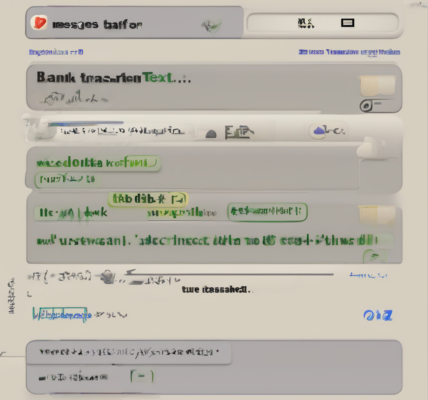Maryland Transfer Application: A Comprehensive Guide
Transferring to a Maryland college or university can be a significant undertaking, requiring careful planning and attention to detail. This guide provides a comprehensive overview of the Maryland transfer application process, covering key aspects from initial research to final acceptance.
Understanding Maryland’s Higher Education Landscape
Maryland boasts a diverse range of higher education institutions, each with its unique admissions criteria and academic offerings. Before starting the application process, it’s crucial to research potential schools, considering factors such as:
- Academic Programs: Identify institutions offering your desired major or area of study.
- Campus Culture: Consider the size, location, and overall atmosphere of the campus to find the best fit for your learning style and preferences.
- Financial Aid and Scholarships: Research the financial aid opportunities available at different institutions to determine affordability.
- Student Support Services: Explore the availability of academic advising, tutoring, and other support services that can enhance your academic success.
- Location and Accessibility: Consider the proximity of the institution to your residence and access to transportation.
Choosing the Right Institution
Once you’ve compiled a list of potential schools, narrow your choices based on your academic goals, personal preferences, and financial considerations. Factors to consider during this selection process include:
- Program Accreditation: Verify that the programs you’re interested in are accredited by relevant professional organizations.
- Faculty Expertise: Research the faculty members in your chosen field to assess their research interests and teaching experience.
- Graduation Rates: Examine the institution’s graduation rates as an indicator of student success.
- Career Services: Investigate the career services available to help you secure internships and post-graduation employment.
- Student Reviews and Rankings: Review student feedback and institutional rankings to gain a broader perspective on the institution’s strengths and weaknesses.
Gathering Required Documents
The transfer application process typically involves submitting various documents. It’s essential to gather these documents well in advance to avoid delays:
- Official Transcripts: Request official transcripts from all previously attended colleges and universities. Ensure that these transcripts are sent directly from the issuing institution to the admissions office.
- Application Form: Complete the application form thoroughly and accurately, providing all required information.
- Letters of Recommendation: Secure letters of recommendation from professors or other individuals who can attest to your academic abilities and personal qualities.
- Essays or Personal Statements: Write compelling essays that highlight your academic achievements, goals, and reasons for transferring.
- Test Scores (if required): Some institutions may require standardized test scores such as the SAT or ACT. Check the specific requirements of your chosen institutions.
- Resume or Curriculum Vitae (CV): Submit a resume or CV that outlines your academic and professional experiences.
- Financial Aid Documents (if applicable): If you plan to apply for financial aid, gather the necessary documents, such as tax returns and bank statements.
Completing the Application Form
The application form is a crucial component of your transfer application. Pay close attention to detail and ensure that all information is accurate and complete. Common sections of a transfer application include:
- Personal Information: Provide your full name, address, contact information, and other personal details.
- Educational Background: Detail your previous educational history, including high school and any colleges or universities attended.
- Academic Record: Report your GPA and list your coursework completed at previous institutions.
- Intended Major: Specify your intended major or area of study at the transferring institution.
- Essays and Personal Statements: Craft compelling essays that showcase your strengths and explain your reasons for transferring.
- References: Provide the names and contact information of individuals who can write letters of recommendation on your behalf.
Writing a Strong Transfer Essay
The transfer essay is a crucial opportunity to showcase your personality, goals, and reasons for transferring. A compelling essay should:
- Clearly articulate your reasons for transferring: Explain why you are seeking to transfer from your current institution and what you hope to gain from attending the new institution.
- Highlight your academic achievements and experiences: Showcase your academic strengths and any significant achievements or projects you have undertaken.
- Demonstrate self-reflection and growth: Reflect on your past experiences and how they have shaped your academic and personal development.
- Connect your past experiences to your future goals: Demonstrate how your past experiences align with your future academic and career aspirations.
- Proofread carefully: Ensure that your essay is free of grammatical errors and typos.
Submitting Your Application
Once you have completed your application form and gathered all required documents, submit your application according to the institution’s instructions. Keep track of deadlines and ensure that all materials are submitted on time.
- Online Submission: Many institutions offer online application portals for convenience.
- Mail Submission: Some institutions may require applications to be submitted via mail.
- Application Fees: Pay any applicable application fees according to the institution’s guidelines.
- Confirmation: After submitting your application, retain a copy for your records and check for confirmation of receipt from the institution.
Understanding Transfer Credit Policies
Each institution has its own transfer credit policy, outlining which courses from your previous institutions will be accepted for credit. Carefully review the policy of your target institution to understand what courses may transfer and how they will impact your academic progress.
- Course Equivalency: Determine whether your previously completed courses align with the courses offered at your target institution.
- GPA Requirements: Check if there are any minimum GPA requirements for transfer credit to be awarded.
- Maximum Transfer Credits: Find out the maximum number of transfer credits the institution will accept.
- Credit Evaluation Process: Understand the process by which the institution will evaluate your transfer credits.
Financial Aid and Scholarships
Financing your education is a crucial aspect of the transfer application process. Explore various funding options, including:
- Federal Financial Aid: Apply for federal financial aid through the Free Application for Federal Student Aid (FAFSA).
- Institutional Scholarships: Check for scholarships offered by the institution you are applying to.
- Private Scholarships: Research private scholarships and grants available through various organizations.
- State Grants: Investigate state-specific grant programs that may be available to you.
- Loans: Consider student loans as a last resort after exploring other funding options.
After Application Submission
Following application submission, stay informed about the application status and respond promptly to any requests from the admissions office. Many institutions provide online portals to track application progress. Remember to be patient as the review process can take time.
Appealing a Decision
If you are not accepted, understand the institution’s appeal process. This may involve providing additional information or addressing specific concerns raised in the denial letter.
Contacting the Admissions Office
If you have questions or require clarification on any aspect of the application process, do not hesitate to contact the admissions office of your chosen institution. They are a valuable resource for addressing any concerns or providing guidance throughout the process.




